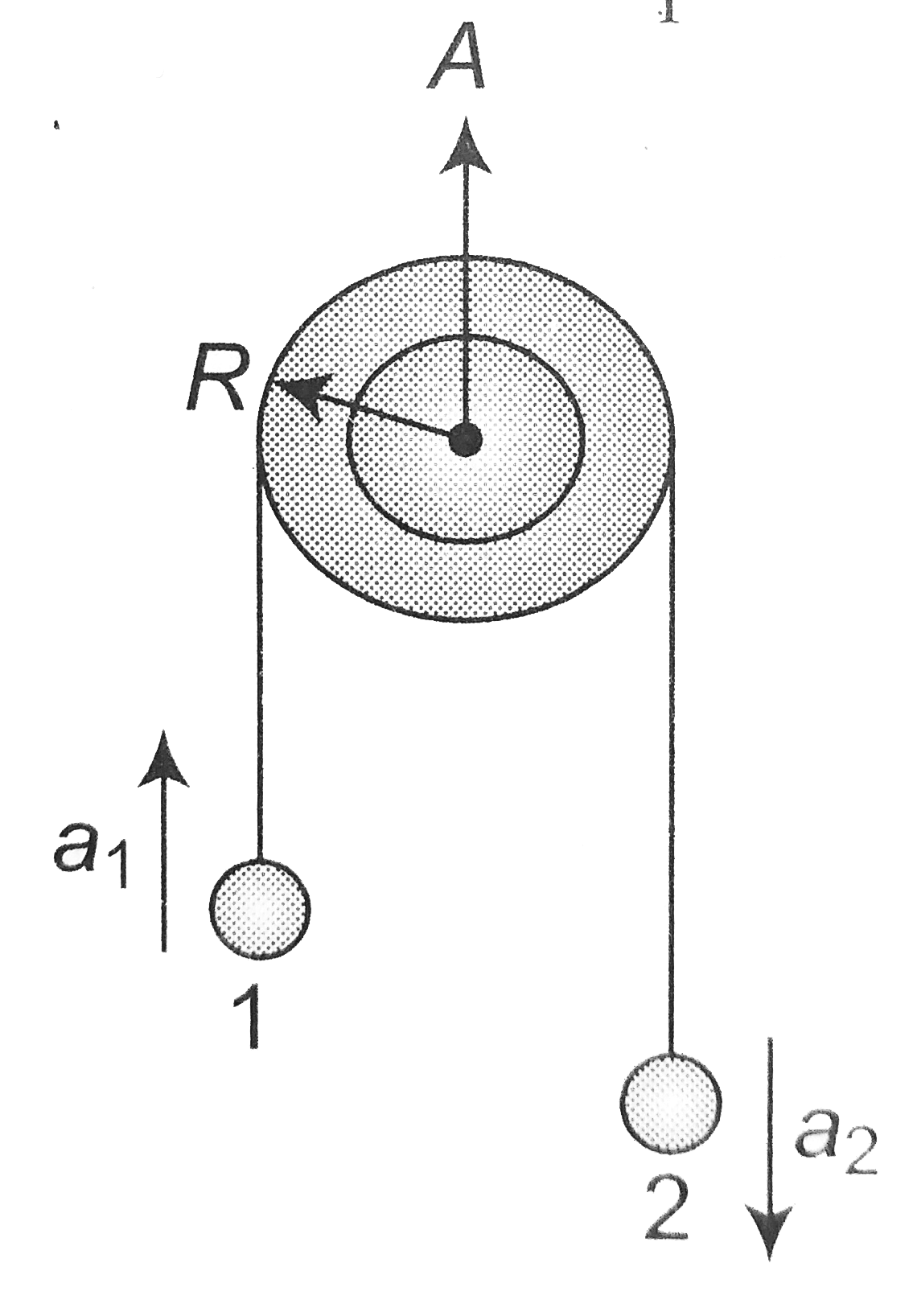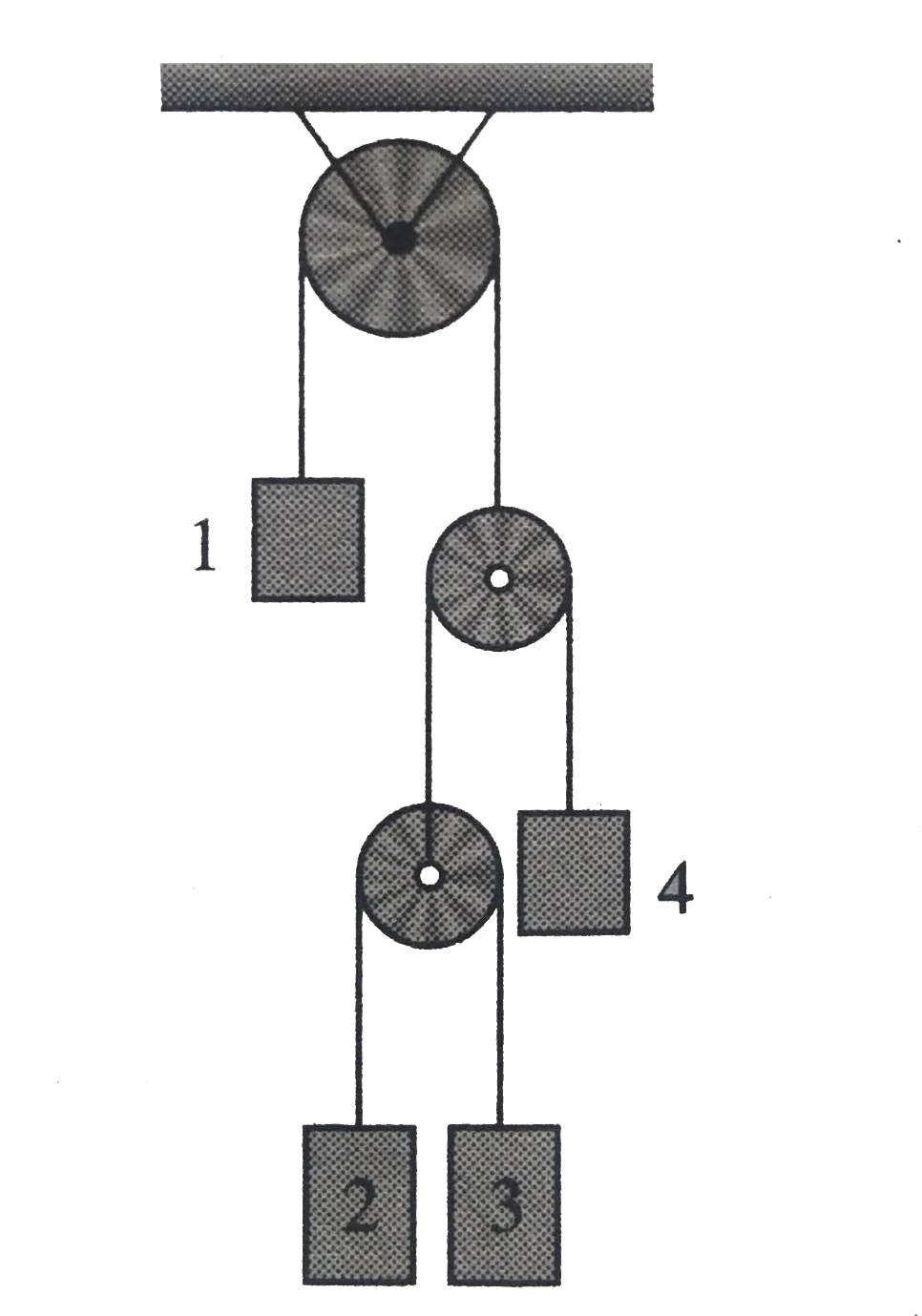If pulleys shown in the diagram are smooth and massless and a1 and a2 are acceleration of blocks of mass 4 kg and 8 kg respectively, then -

a1=a2
a1=2a2
2a1=a2
a1=4a2
Step by step video & image solution for If pulleys shown in the diagram are smooth and massless and a_(1) and a_(2) are acceleration of blocks of mass 4 kg and 8 kg respectively, then - by Physics experts to help you in doubts & scoring excellent marks in Class 12 exams.
Updated on:21/07/2023Topper's Solved these Questions
- LAWS OF MOTIONBook:AAKASH INSTITUTEChapter:LAWS OF MOTIONExercise:Assignment (SECTION-B)
Explore 44 Videos
- LAWS OF MOTIONBook:AAKASH INSTITUTEChapter:LAWS OF MOTIONExercise:Assignment (SECTION-C)
Explore 63 Videos
- LAWS OF MOTIONBook:AAKASH INSTITUTEChapter:LAWS OF MOTIONExercise:EXERCISE
Explore 70 Videos
- KINETIC THEORYBook:AAKASH INSTITUTEChapter:KINETIC THEORYExercise:EXERCISE (ASSIGNMENT) SECTION - D Assertion - Reason Type Questions
Explore 10 Videos
- MAGNETISM AND MATTER Book:AAKASH INSTITUTEChapter:MAGNETISM AND MATTER Exercise:ASSIGNMENT (SECTION D)
Explore 26 Videos
Similar Questions
In the system shown in the diagram all surfaces are smooth, pulley and strings are ideal. If −→aA and −→aB are the accelerations of the two blocks, then just after the system is released from rest, then choose correct statement(s) :

View SolutionIn the arrangement shown in fig., all pulleys are smooth and massless. When the system is released from the rest, acceleration of block 2 and 3 relative to 1 are 1ms−2 downwards and 5ms−2 downwards, respectively. Acceleration of block 3 relative to 4 is zero.

Find the absoulte acceleration of block 2.
View Solution
Knowledge Check
Two masses are connected by a string which passes over a pulley acceleration upward at a rate A shown. If a1 and a2 be the accelerations of bodies 1 and 2 respectively then,
 AA=(a1+a2)BA=(a1−a2)CA=a1+a22DA=a1−a22
AA=(a1+a2)BA=(a1−a2)CA=a1+a22DA=a1−a22In the arrangement shown in fig., all pulleys are smooth and massless. When the system is released from the rest, acceleration of block 2 and 3 relative to 1 are 1ms−2 downwards and 5ms−2 downwards, respectively. Acceleration of block 3 relative to 4 is zero.

Find the absoulte acceleration of block 4.A2ms−2 upwardsB1ms−2 downwardsC3ms−2 downwardsD1.5ms−2 upwardsIn the arrangement shown in fig., all pulleys are smooth and massless. When the system is released from the rest, acceleration of block 2 and 3 relative to 1 are 1ms−2 downwards and 5ms−2 downwards, respectively. Acceleration of block 3 relative to 4 is zero.

Find the absolute acceleration of block 1.A2ms−2 upwardsB1ms−2 downwardsC3ms−2 upwardsD1.5ms−2 downwards
In the arrangement shown in fig., all pulleys are smooth and massless. When the system is released from the rest, acceleration of block 2 and 3 relative to 1 are 1ms−2 downwards and 5ms−2 downwards, respectively. Acceleration of block 3 relative to 4 is zero.

Find the absoulte acceleration of block 3.
View SolutionIn the diagram shown in figure, both pulleys and strings are massless. The acceleration of 2 kg block is

View SolutionIn the adjacent figure, all the pulleys are frictioniess and massless, all the stringes are also massless. The relation between a1,a2 and a3 is (where a1,a2 and a3 are the acceleration of masses m1,m2 and m3 respectively in the direction as shown in the figure)

View SolutionIn the shown diagram m1=m2=4kg and m3=2kg. Coefficient of friction between m1andm2 is 0.5. The mass m1 is given a velocity v and it just stops at the other end of the mass m1 in 1 sec. Let a1anda2anda3 be the acceleration m1,m2andm3 respectively, then :

View SolutionThere is friction between the block A and B while ground is smooth. Magnitude of force F is increasing linearly with time, a1anda2 are accelerations of block A and B. Which graph best represents acceleration a1anda2 of block A and B respectively with time?

View Solution